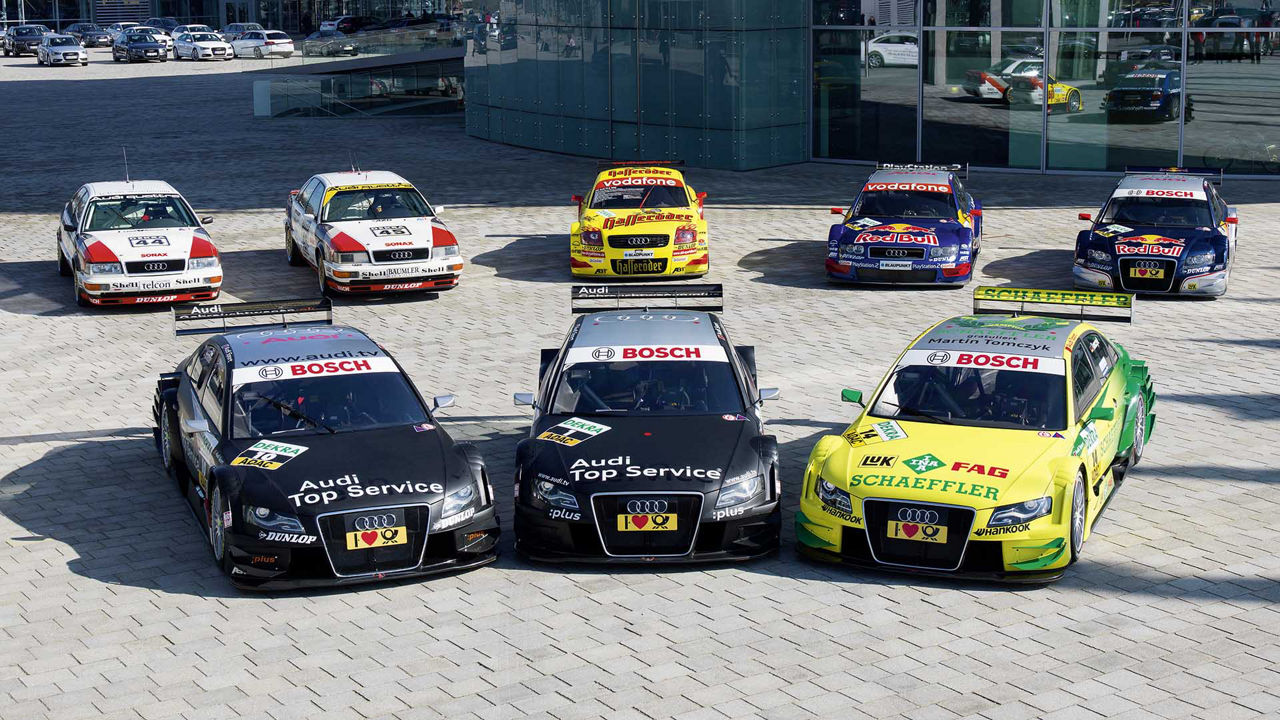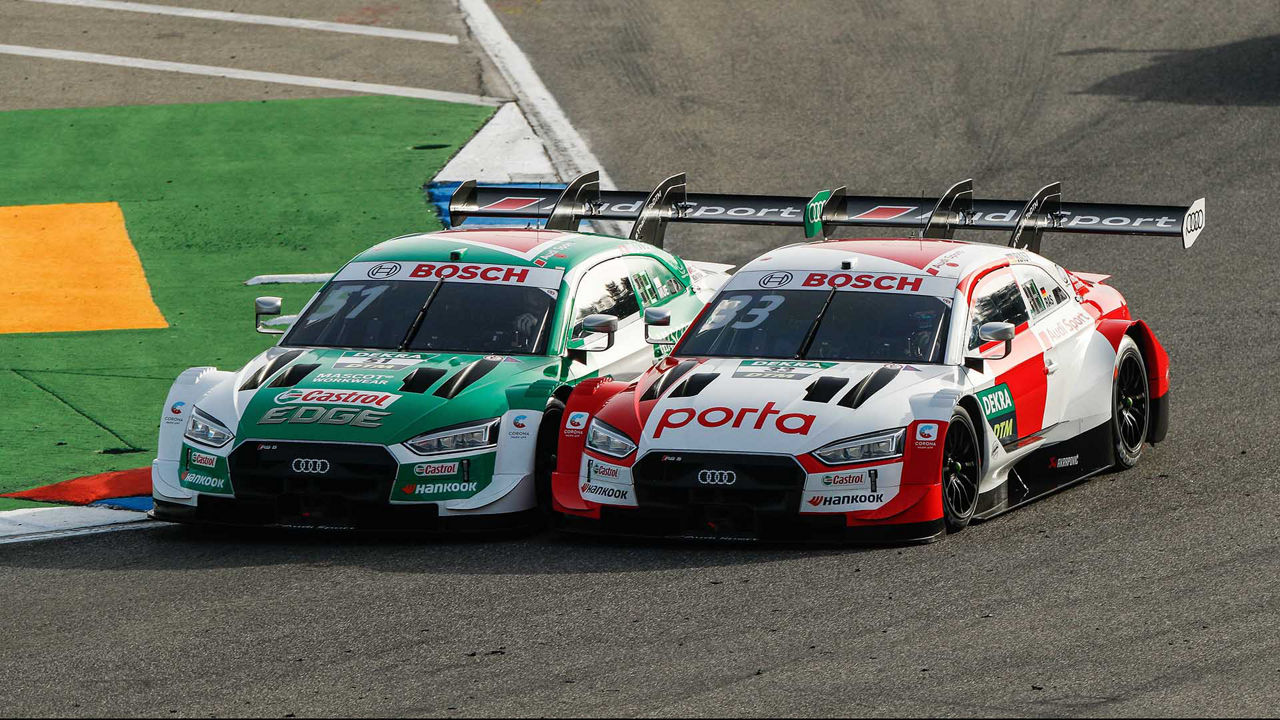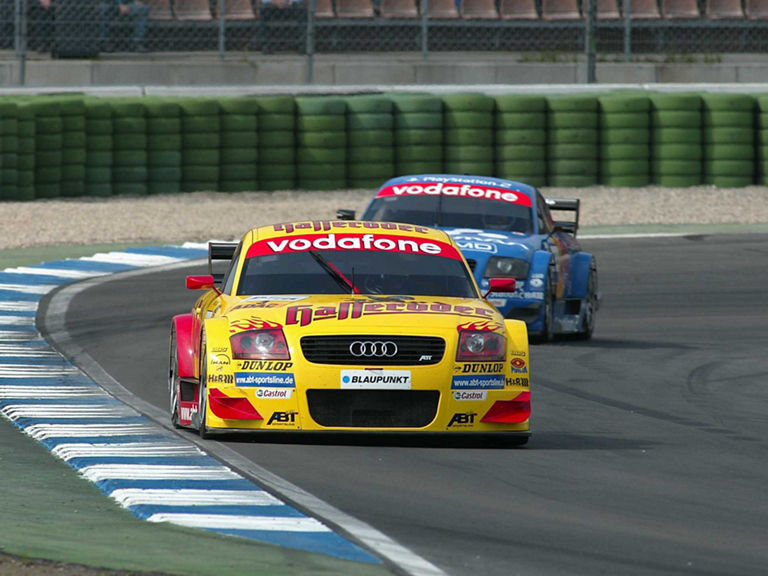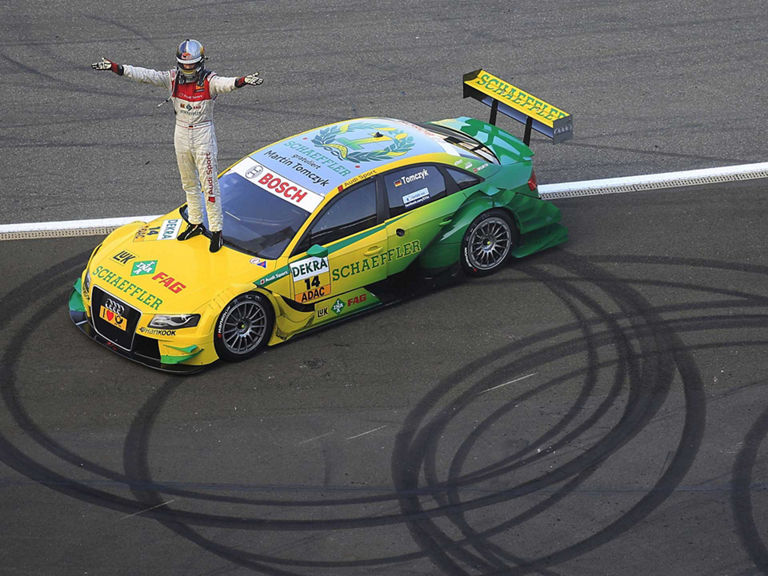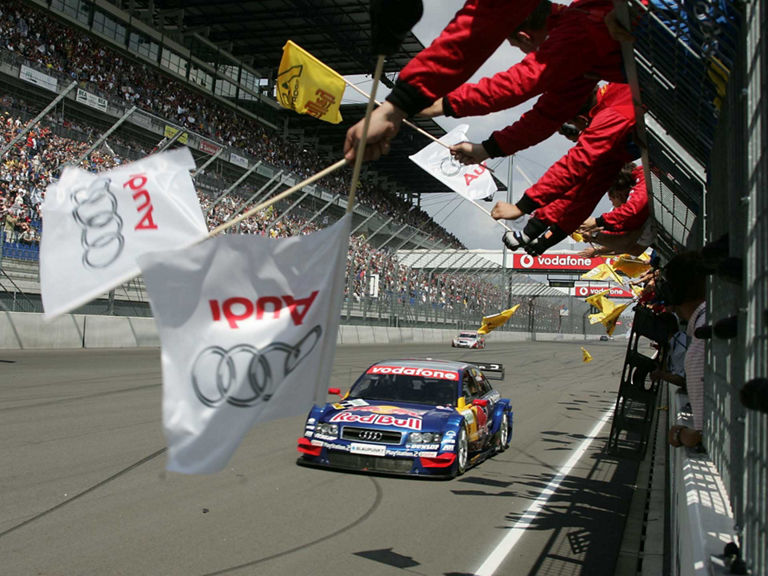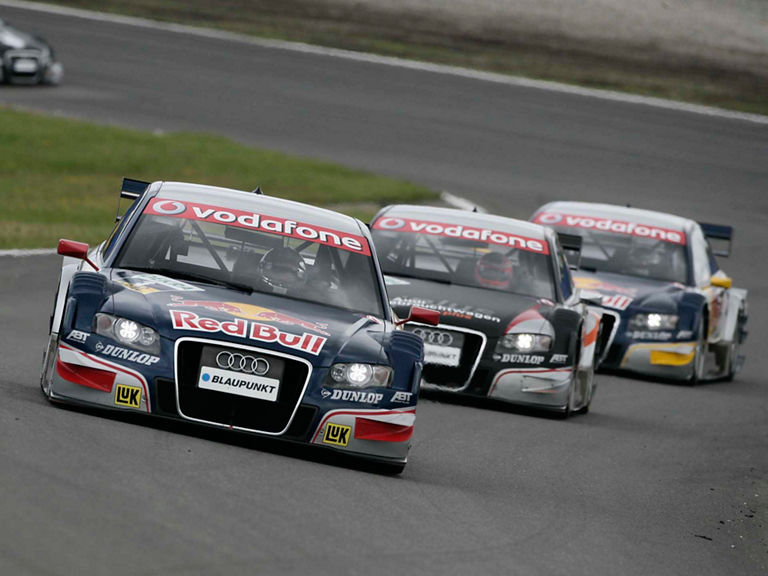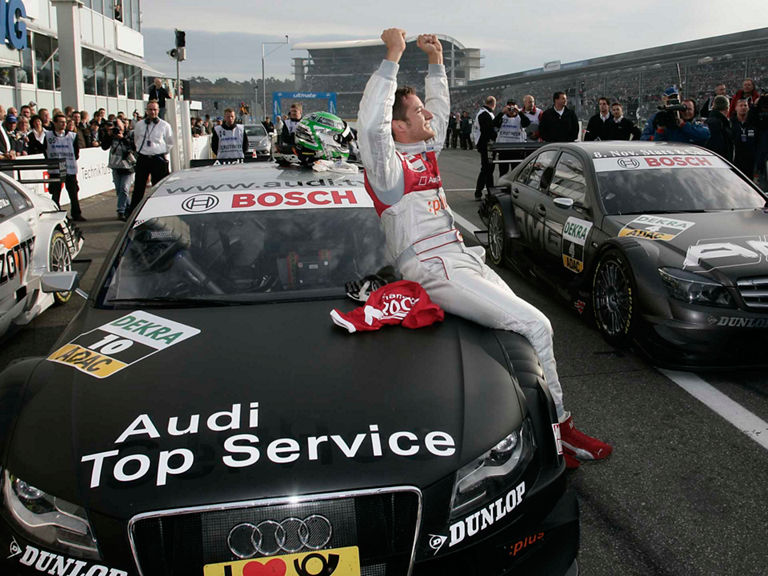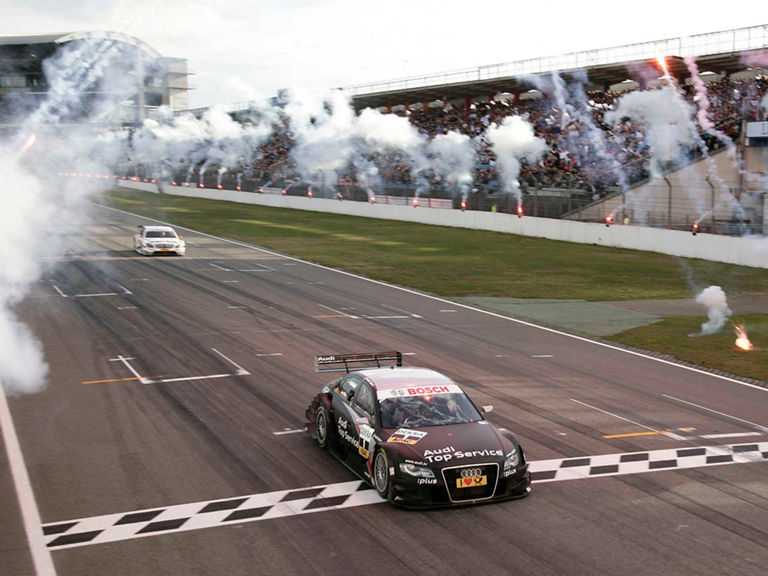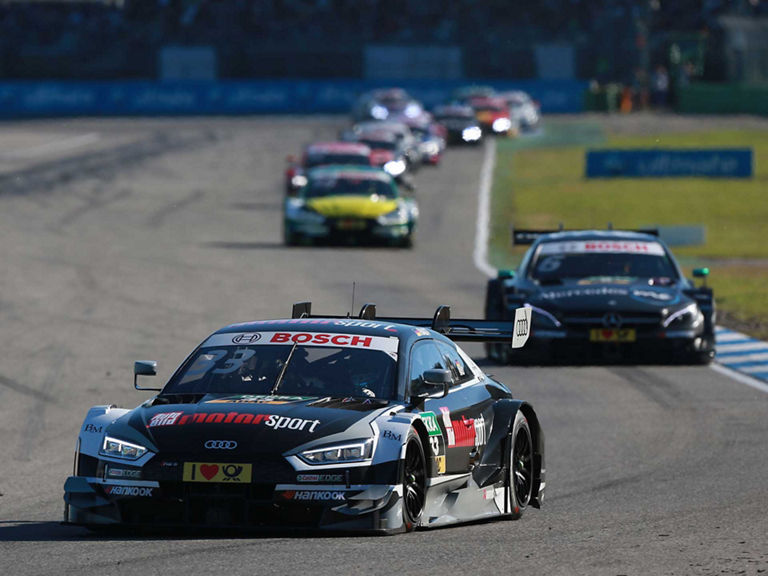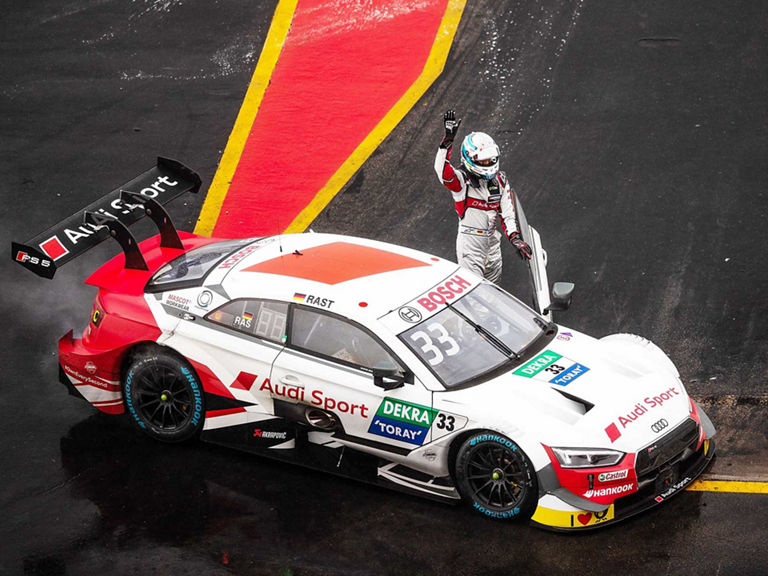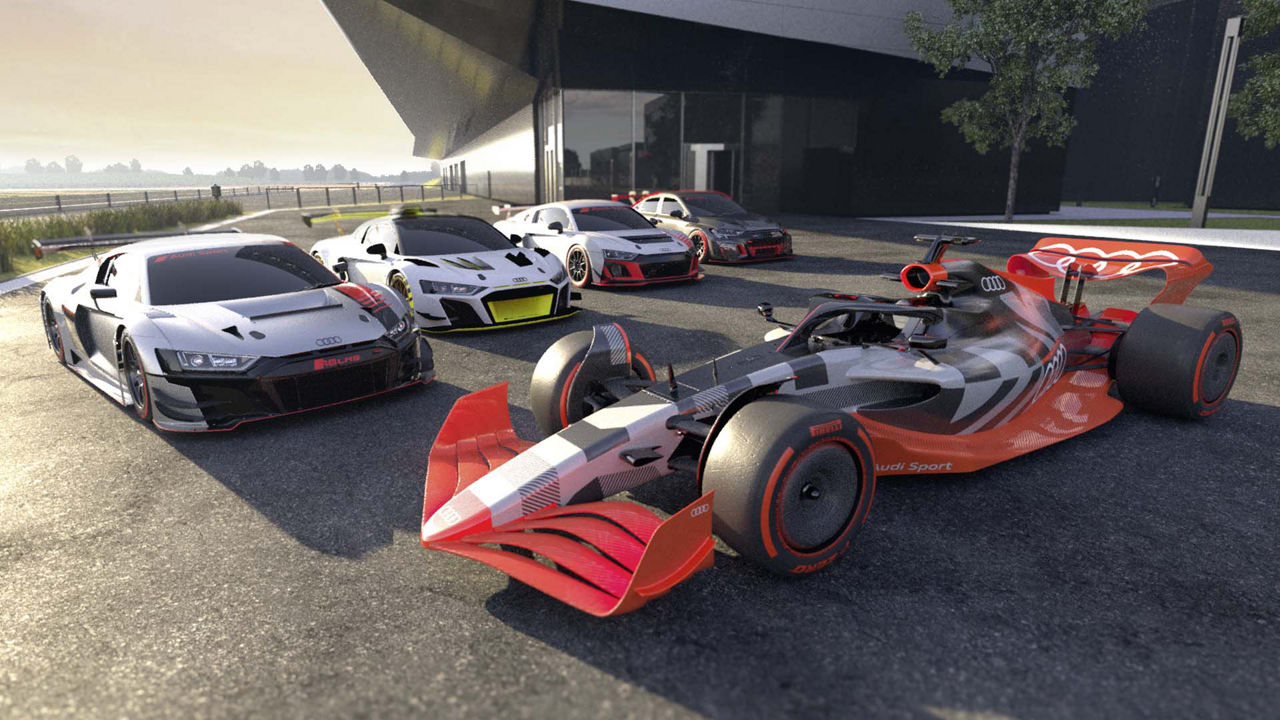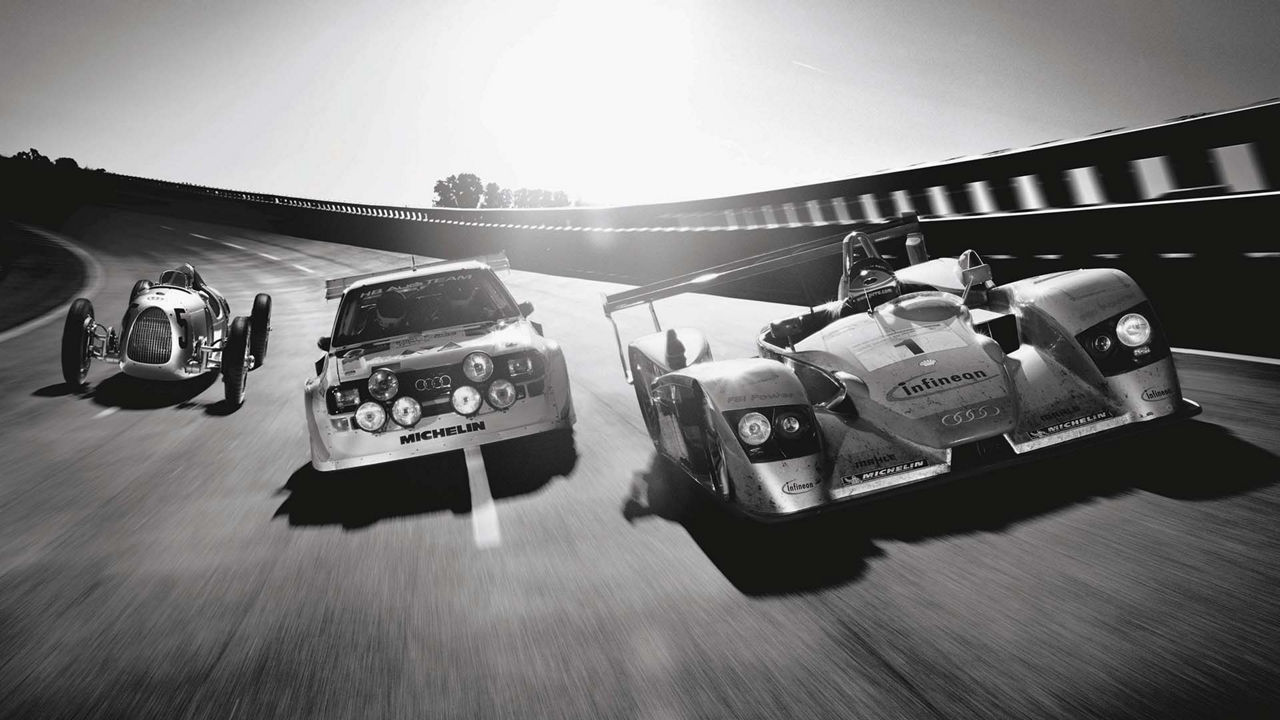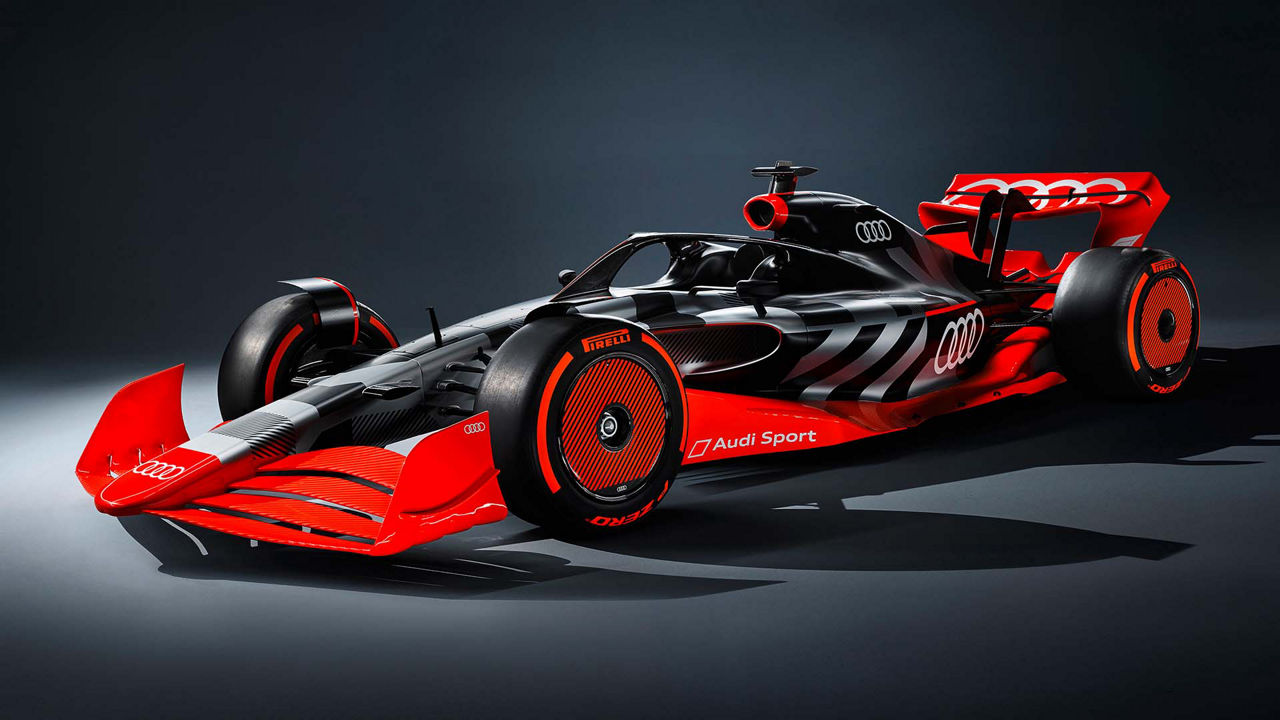


A special DTM champions photo shoot in Neuburg: from the left: Frank Biela, Mattias Ekström, Mike Rockenfeller and René Rast. Not pictured: Timo Scheider, Hans-Joachim Stuck and Martin Tomczyk
A special DTM champions photo shoot in Neuburg: from the left: Frank Biela, Mattias Ekström, Mike Rockenfeller and René Rast. Not pictured: Timo Scheider, Hans-Joachim Stuck and Martin Tomczyk
Private commitment from Abt Sportsline
Running start
When the DTM began in 2000, Audi was not yet on the starting grid. Nevertheless, the four rings were present in the field right from the beginning: Abt Sportsline from Kempten ventured into the new racing series as a private team with the Abt-Audi TT-R. In 2002, the team with Audi factory driver Laurent Aiello achieved a major coup: the Allgäu-based outfit beat the factory teams from Mercedes-Benz and Opel in the championship battle.

The Abt-Audi TT-R debuted with Abt Sportsline in 2000
Audi A4 DTM
The comeback
Audi returned to the DTM with a factory commitment in 2004. The newly developed Audi A4 DTM was immediately capable of winning. Mattias Ekström won the title in the year of Audi’s return. The Swede repeated his feat three years later with a further developed version of the A4 DTM. Timo Scheider was then crowned as the champion in 2008 and 2009, which was very popular with the public. After three successful years, Audi celebrated a hat-trick of titles, something no other manufacturer had ever achieved before. With Martin Tomczyk at the wheel in 2011, the A4 DTM clinched a fifth and final title in its career.

The Audi Sport factory team line-up for the 2004 DTM season from Abt Sportsline and Team Joest
Audi A5 DTM / Audi RS 5 DTM
Two-door coupé era
A new era dawned in the 2012 season. With the entry of BMW, the DTM opted for modern and standardised CFRP monocoques for all three manufacturers. Audi initially switched from the A4 DTM to the A5 DTM and then to the RS 5 DTM in 2013. The coupé with the four rings continued to be powered by the familiar four-litre naturally aspirated V8 engine. Mike Rockenfeller, who contested a dual programme in the Le Mans prototypes and the DTM for Audi for many years, came out on top in the final DTM standings in 2013. René Rast took the next title in 2017. The last two seasons of the Class 1 DTM era were characterised by the new turbo engines from 2019 onwards. Audi had developed a two-litre four-cylinder turbocharged engine with 610 hp. Within only two years, Audi took 28 victories, 95 podiums, 29 pole positions, 28 fastest race laps and the championship titles in all of the classifications with the RS 5 DTM. René Rast was once again the best driver. Class 1 then came to an end, with the DTM turning its attention to customer racing models in the GT3 category from 2021.

The launch of the Audi A5 DTM ahead of the 2012 season
Gallery
